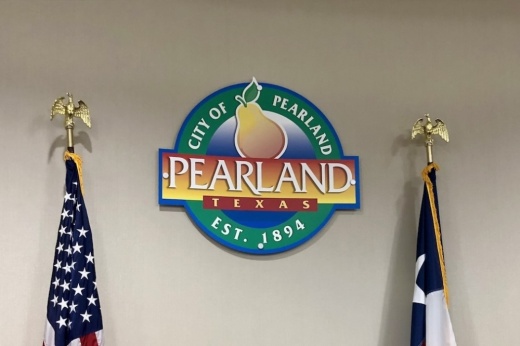A mistake between Brazoria tax office and Harris appraisal district officials caused the error that set the city back $10 million, staff said.
"In times like this, this is when council needs to heed and listen, understand, get the facts, really understand what happened here," Pearland Mayor Kevin Cole said.
City Manager Clay Pearson sent a letter to Pearland City Council members Nov. 2 detailing a “major negative issue” facing the city’s fiscal year 2023 budget.
“The value in the State-mandated worksheet prepared and given to us by Brazoria County used a number ... that overstates the 2022 value of properties not under protest or included on certified appraisal roll by ~ $1.3 billion,” the letter, posted on Facebook by Council Member Alex Kamkar, reads.
According to a staff presentation on Nov. 7 detailing the cause of the error, the mistake occurred as the Harris County Appraisal District, or HCAD, was collaborating with the Brazoria County Tax Office to compile information and generate the city’s yearly taxable value.
The original tax worksheet sent to the city July 29 listed the city’s total taxable value at about $11 billion. The corrected worksheet now shows that the correct total 2022 taxable value is about $9.5 billion, a 14.1% difference.
The figure that was recorded incorrectly in the original July worksheet was the “2022 value of properties not under protest or included on certified appraisal roll,” which was recorded as $1.3 billion, significantly higher than the accurate figure of $30 million. The presentation states that Brazoria County officials were instructed by HCAD to use the $1.3 billion value.
During the presentation, Pearson said the city’s tax, water and sewer rates will remain unchanged. The presentation states that the corrected no-new-revenue and debt service rates from Brazoria County would have been higher than the rates already adopted by the city, and these rates should be used as a basis for comparison in FY 2024.
In terms of items that are affected by the error, the city’s adopted general fund was off by $4.7 million, and the tax-backed debt service fund was off by $5.6 million, totaling a revenue difference of about $10.3 million.
The presentation proposes that the city addresses the $10 million budget shortfall with the use of the city’s reserve funds. According to the presentation, utilizing reserve funds would drop reserves below the city’s 90-Day Reserve Policy by about $2 million.
The council did not decide which actions to take to address the deficit. A budget amendment will be addressed at the following Nov. 21 and Dec. 9 meetings. The first budget amendment is normally used for carryovers, but this first amendment will address the updated revenue and expenditures.
According to the presentation, staff discovered the error while working to update the city’s tax calculator sheet while preparing for a discussion on the city’s newest proposed TIRZ, or Tax Increment Reinvestment Zone.
Council Member Kamkar called for an independent review of the process from a third party for additional accountability in determining where the process went wrong.
“It wasn’t just somebody telling us on a worksheet that something was messed up,” Kamkar said. “We didn’t have enough critical rigor applied to this.”





